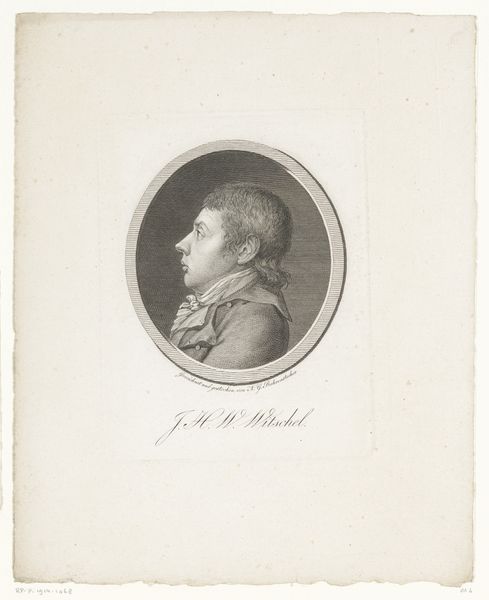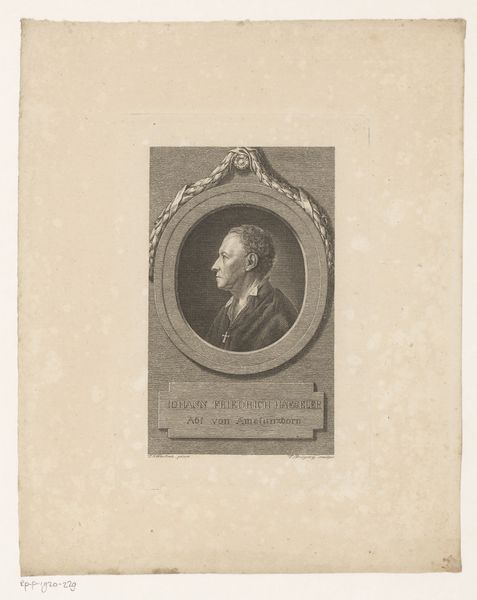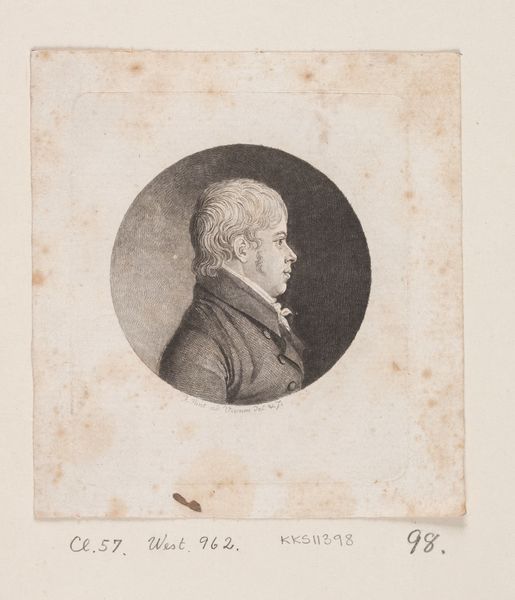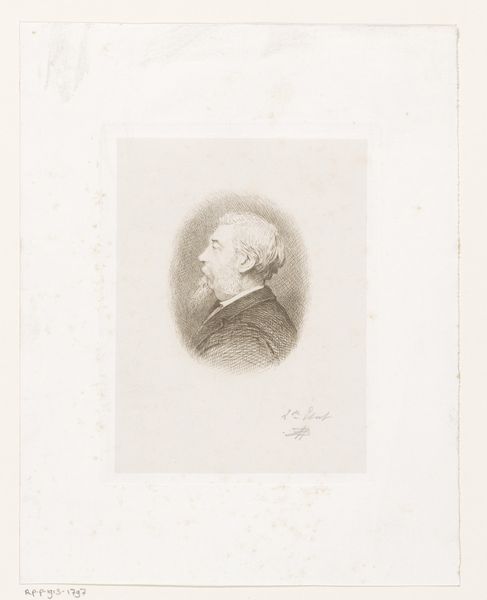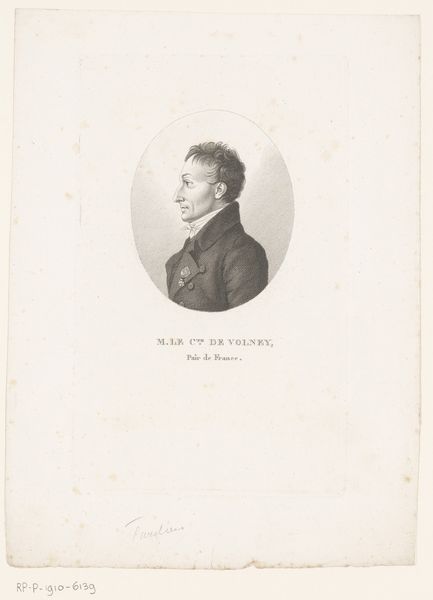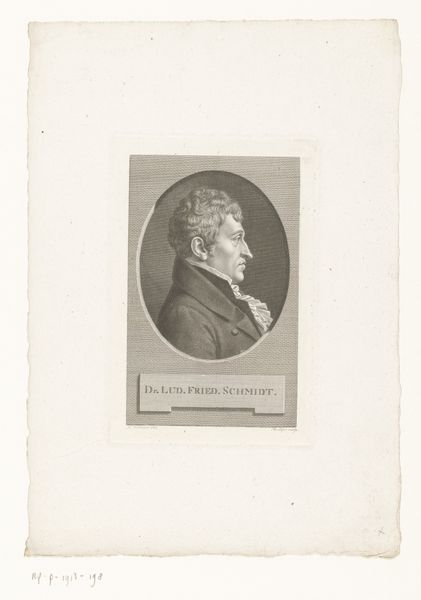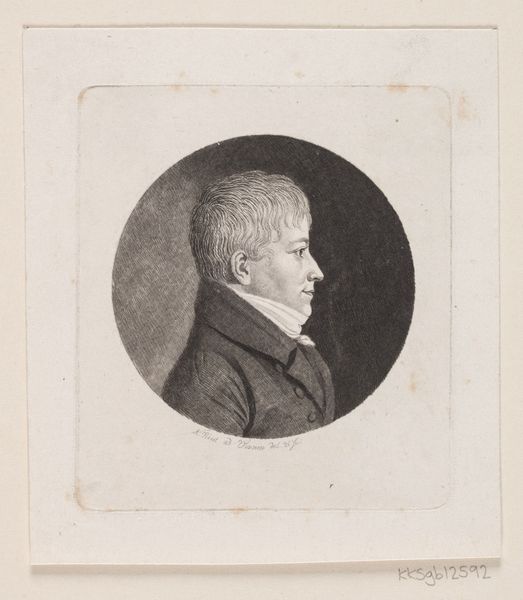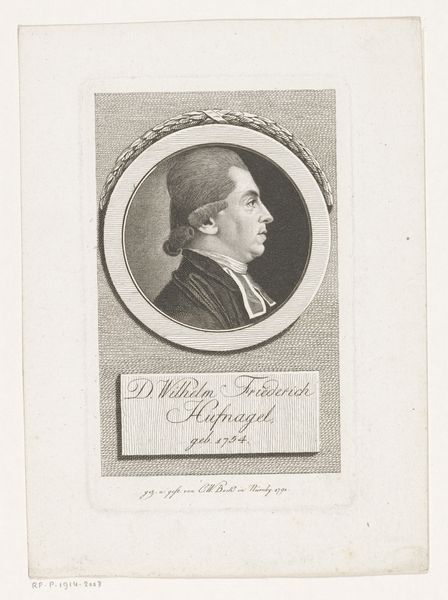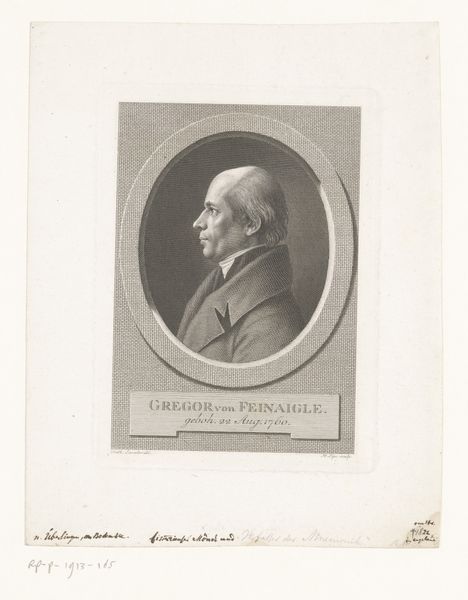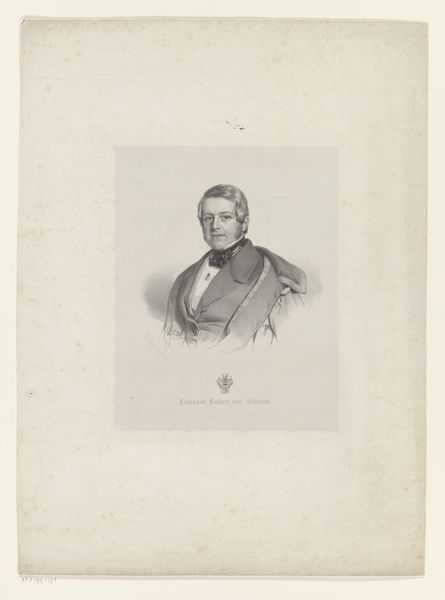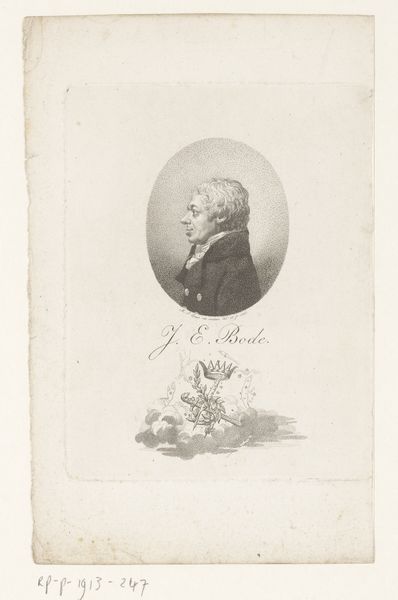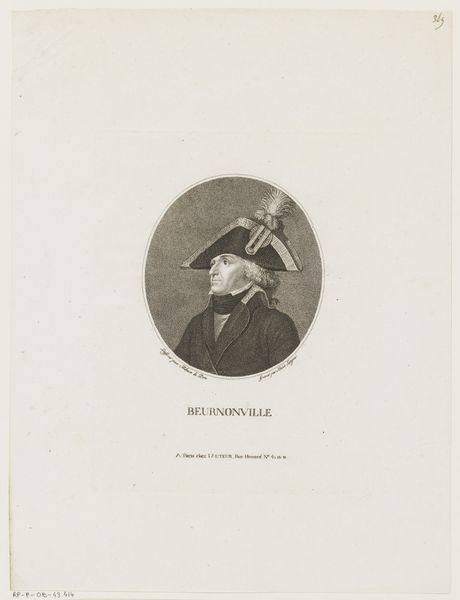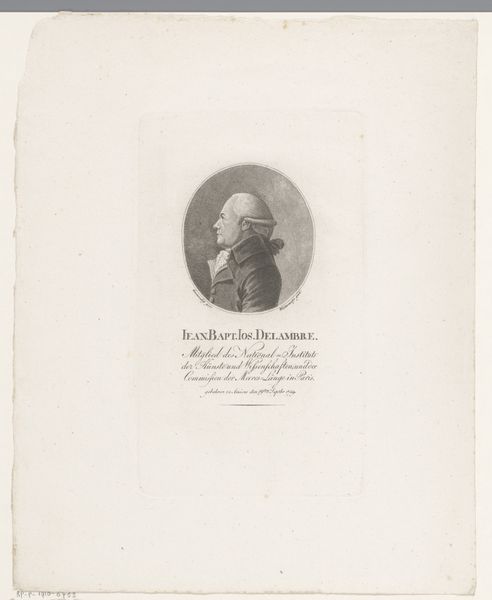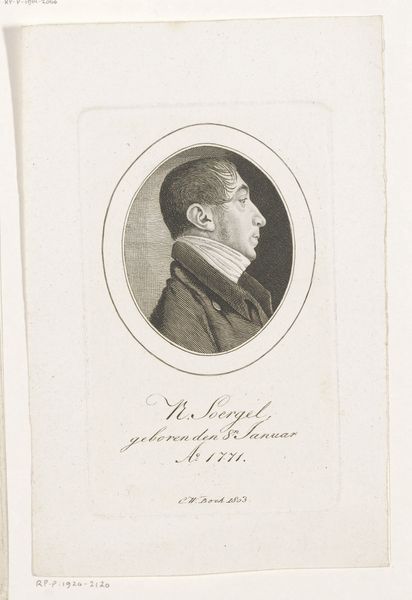
engraving
#
portrait
#
neoclacissism
#
geometric
#
engraving
Dimensions: height 156 mm, width 97 mm
Copyright: Rijks Museum: Open Domain
Curator: This engraving presents a portrait of Daniel Melander af Melanderhielm, dating from between 1796 and 1825. Johann Gottlieb Boettger created this work showcasing a subject deeply embedded within the neoclassical style, emphasizing formal precision and clarity. What's your initial response? Editor: Austere, but compelling. The tight framing within the oval draws the eye directly to the subject’s profile. There's a subtle defiance, or perhaps just intense focus, conveyed through his rigid posture. It feels charged, yet very controlled. Curator: Exactly. Control is key here. Neoclassicism in portraiture, particularly of influential figures, was about projecting power and legitimacy through calculated imagery. Note the symbolic details - the crisp lines and geometric composition reflecting the rational order embraced during the Age of Enlightenment. Boettger seems to be aligning Melanderhielm with those virtues. Editor: That star emblem looks significant; a clear marker of status. What role did the sitter have in the social hierarchy of the time? Because depending on his place within a potentially exploitative societal system, this ‘power and legitimacy’ you mentioned might not be such a positive thing. Curator: Daniel Melander af Melanderhielm, a Swedish official elevated to nobility. This engraving, intended for circulation within political and social circles, acted as a visual representation of his elevated status—it’s almost propaganda. Editor: Propaganda, right. Which complicates any straightforward admiration we might have for its technical skill. Whose interests does this image serve? How does it reinforce social stratification? Seeing art as intertwined with systems of power encourages this line of questioning, challenging us to unpack the historical context shaping both the subject and the artwork itself. Curator: These engravings are invaluable documents, offering visual insights into the construction of identity and power. Examining these artifacts deepens our awareness of the socio-political structures of the past, inviting discussions about how visual media shaped perceptions. Editor: And it demonstrates how relevant critical engagement with historical portraiture is, especially when confronting inequalities that echo through generations. Curator: Precisely, reminding us that visual representation has profound political implications, historically and today.
Comments
No comments
Be the first to comment and join the conversation on the ultimate creative platform.
